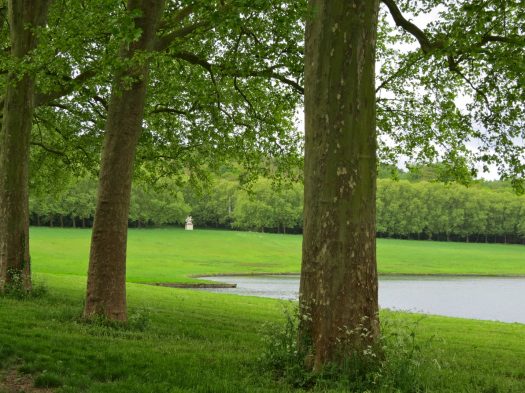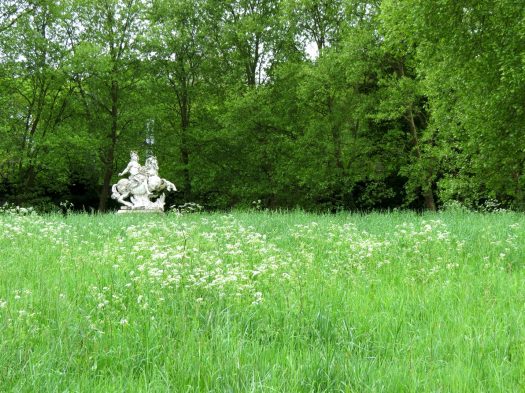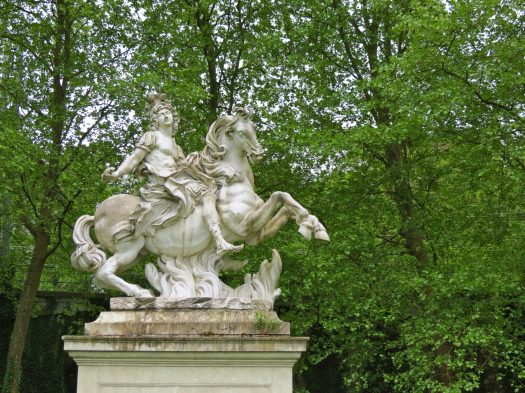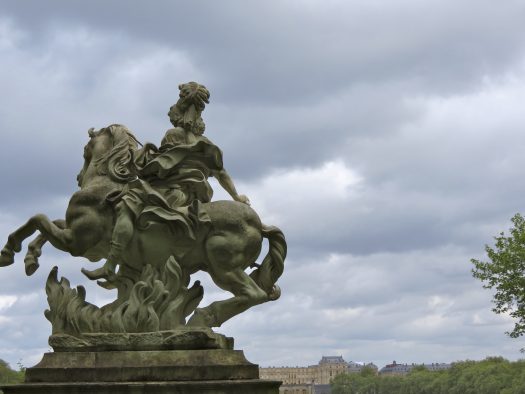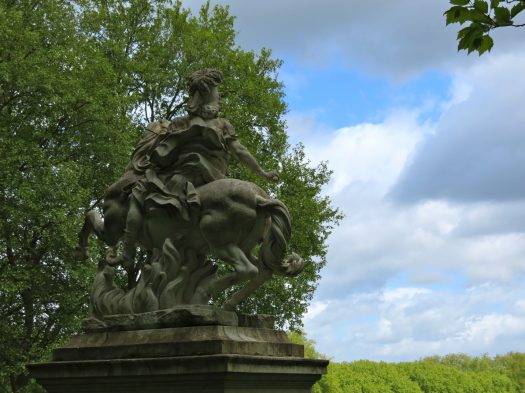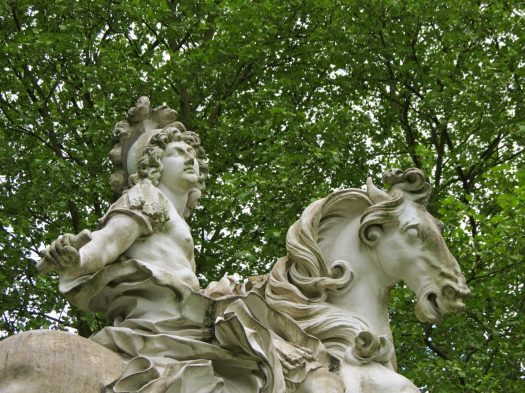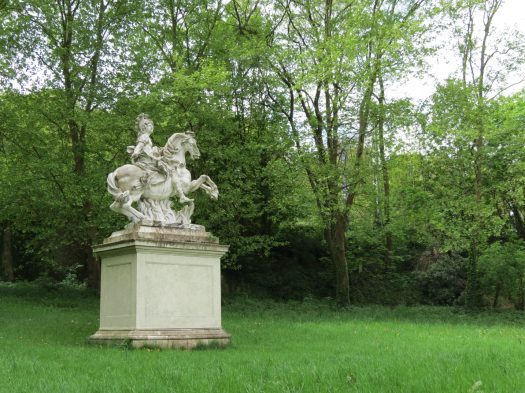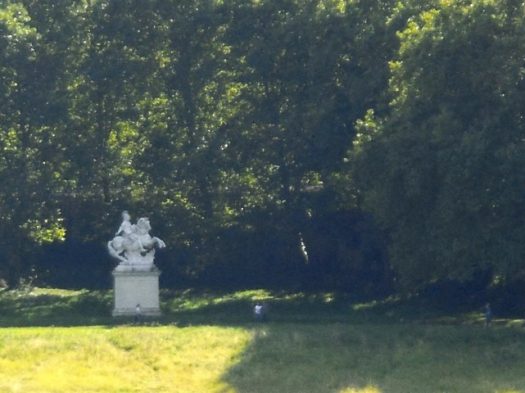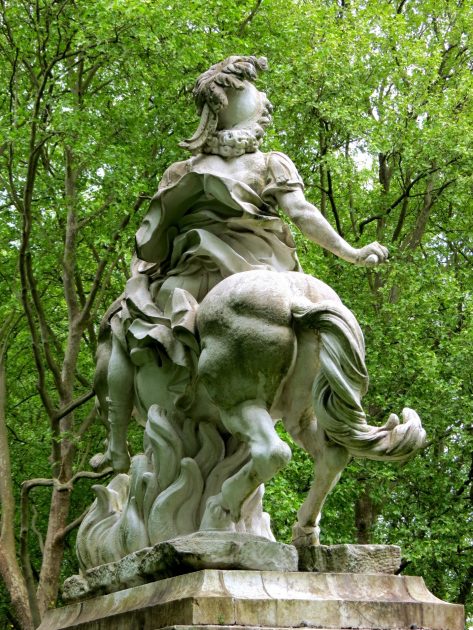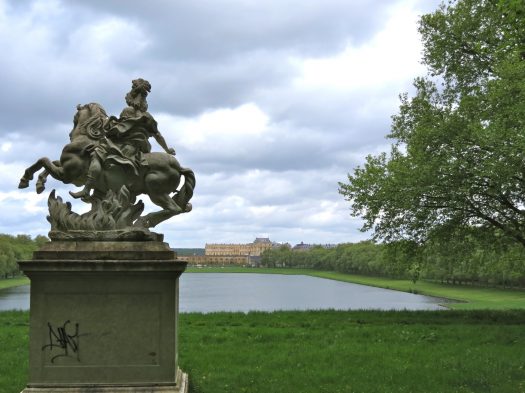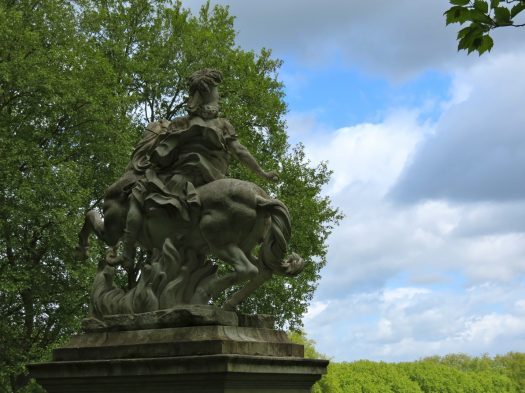Louis XIV also invited Bernini to Paris and commissioned an equestrian statue. Bernini’s trip to France in 1665 was his only prolonged absence from Rome. His popularity was such that admiring crowds lined the streets on his walks in Paris. However, he soon lost favour at the French court as he praised the art and architecture of Italy over that of France.
The king’s minister told Bernini to make it like Bernini’s statue of Constantine in the Vatican, but not a copy of it. ‘Not to worry’, Bernini wrote back to him. ‘My Constantine is entranced by the vision of the Cross above him and King Louis will be in the attitude of majesty and command’.
The Constantine statue was a high relief, as it was attached to a giant stone curtain. The Louis XIV figure had to be freestanding. Problem: how does one make a rearing marble horse? One cannot have a thousand kilograms of marble up in the air unsupported. This was no problem for Bernini. He went home and modelled a rearing horse with a rock under its belly, and he hammered out a meaning for the rock:
That’s the Peak of Virtue. The Divine King Louis, like Hercules before him, came to a crossroads and had to choose between the Primrose Path and the Rocky Climb. He chose the difficult one and now here he has reached the Peak, which is the Temple of Virtue or Glory.
Would the king think this was a bit far-fetched, a little too fawning? No, not for Louis XIV, who was out for La Gloire. The French royal family, as everyone knew, was descended from Hercules Gallicus and Louis was the modern version of this hero. Bernini chose to make the features of Louis XIV resemble those of Alexander the Great.
In 1669, the sculptor stated in a letter that he intended to execute the equestrian statue and started work on a marble block. Bernini already had the occasion to meet his important patron during his stay in Paris in 1665, when he made various studies of the king from life. The horse is depicted in a galloping position. Bernini was inspired by a model by Leonardo da Vinci of a statue of Francis I (that was never executed) and by the statue of Philip IV by Pietro Tacca. Bernini worked for four to eight years on the statue. After the sculptor’s death in 1680, the sculpture remained in his studio until it was taken to Paris in 1684 or 1685.
Louis XIV/Marcus Curtius by Gian Lorenzo Bernini (1680) and Francois Girardon in Versailles
The king, however, was not at all satisfied with the final results of Bernini’s work. The work was sent to Versailles, transformed by Francois Girardon into a statue of Marcus Curtius and exiled to the other end of a large pond, nowadays outside the grounds of the Palace of Versailles. From my own experience, it is hard to find. The pedestal of the statue does not bear any mention of the sculptor or the rider (only some graffiti), and the statue is not to be found on information panels in Versailles. <It is a dreary fate for a statue by the famous sculptor Bernini. >
A clay model of the original statue, now in the Borghese Gallery in Rome, makes it possible to assess the changes that were made by Girardon. The rocks of the Hill of Glory became the flames into which the hero Marcus Curtius threw himself, a Roman helmet was placed on the head, the long hair was trimmed and some features of the face were modified, for example by reducing the size of the nez Bourbonien.
A bronze copy of the statue was placed in the Cour de Napoléon of the Louvre in 1988.
